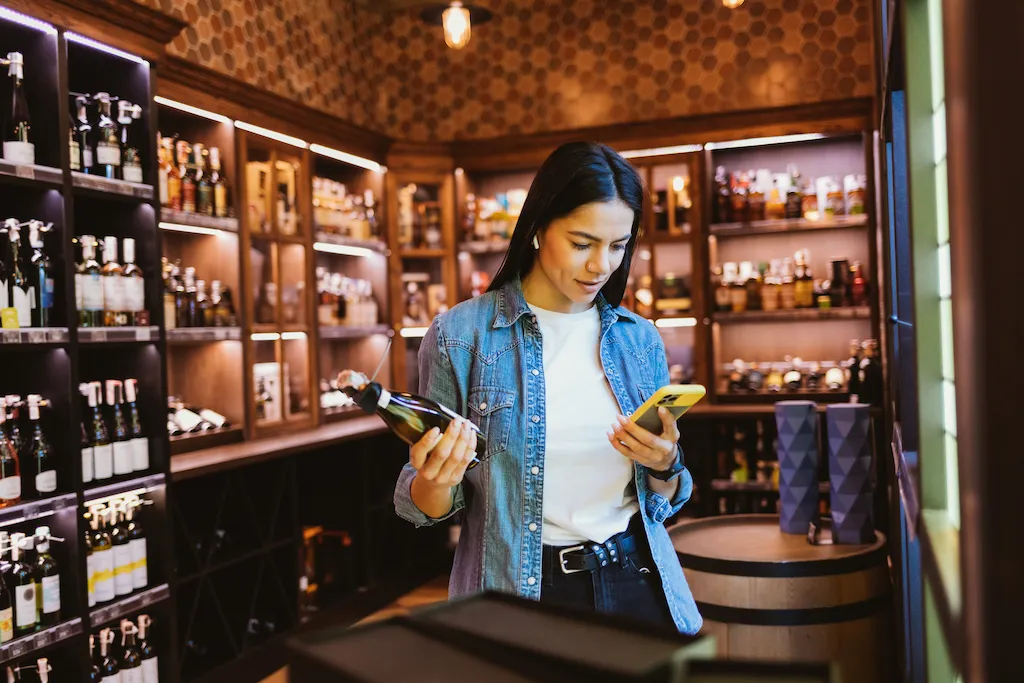A late update: Weinlabel.at joined Glasswise earlier this year
Weinlabel.at joined Glasswise earlier this year. After the former operator retired, all users and labels were migrated to Glasswise to ensure long-term stability and ongoing development.
The EU Commission has presented important changes and clarifications to wine labeling regulations in a recent announcement. This post summarizes the key elements of the new regulations, including the placement of mandatory information on labels and specific requirements for QR codes and ingredient lists.

David Wippel
Founder of Glasswise
On November 24, 2023, the European Commission published in the Official Journal (C/2023/1190) clarifications and answers to key questions regarding the new wine labeling regulations. This announcement addresses essential questited to the revised Regulations 1308/2013 and 2019/33 and introduces some notable new requirements.
A key element of the new regulations is the placement of mandatory information. This information must now all be arranged "in the same field of vision" on the wine bottle label. There are some exceptions, for example, for information about the importer, the batch number, or the minimum shelf life date for de-alcoholized wines.
A particular focus is on the ingredient list. It is necessary to have a clear heading with the word "Ingredients" at the beginning. This list must include all additives and processing aids that could trigger allergies, were used in production, and are still present in the finished product. Interestingly, yeasts are not among these substances, while concentrated grape must or sucrose for enrichment must be considered. Allergenic substances must be distinguished from the rest of the ingredients by a different typeface, such as bold print.
Another important aspect concerns the use of QR codes. While the ingredient list and nutritional declaration can be provided via E-Label or QR code, it is no longer sufficient to merely mark the QR code with a general symbol or term, such as an "i" for information. The new regulation requires that QR codes be clearly represented to the consumer in relation to the content – the mandatory information. Consequently, the information provided via QR code on the label must be accompanied by a distinct heading, specifically the word "Ingredients."
In principle, these new mandatory declarations must apply to wines that are marketed from the start date set in Regulation (EU) 2021/2117, i.e., from December 8, 2023. However, wines "produced" before this date can continue to be marketed according to the labeling regulations in force before December 8, 2023, until stocks are depleted.
A wine is considered "produced" in this context if it meets the characteristics and requirements of its wine category. In short: Still wines whose fermentation is complete fall under the labeling obligations from the 2024 harvest. Sparkling wines or mulled wines, whose final fermentation or flavoring occurs after December 8, 2023, are already subject to the new labeling obligations.

Glasswise guides you from the initial creation of your e-Labels to the seamless deployment of your e-Labels – simple, secure, and always up to date.
As a customer, you benefit from all the advantages of Glasswise. Effortlessly fulfill all labeling requirements for nutritional values and ingredients, compliant with regulations across Europe. This gives you the freedom to focus on what truly matters: your wine.
Offer your members individual conditions, exclusive designs aligned with your branding, and extended setup support. This creates real value, strengthens your brand, and helps your winemakers fully concentrate on their wines.

Weinlabel.at joined Glasswise earlier this year. After the former operator retired, all users and labels were migrated to Glasswise to ensure long-term stability and ongoing development.
Glasswise, the Austrian market leader in digital wine labeling, acquires the Croatian E-Label system from Craft Technology. This strategic acquisition enables Craft Technology to focus on its core product while Glasswise expands its offering and gains access to the Croatian market. A win for winemakers across Europe.
Free e-label solutions may sound tempting, but what are the hidden costs and risks? Learn why sustainable solutions are crucial for long-term e-label compliance and what questions you should ask your provider.
This overview summarizes all changes and updates to our application in February 2025.
This overview summarizes all the changes and updates to our application in January 2024.
This guide shows you as a winemaker the five key factors in choosing an e-label tool, including legal compliance, user-friendliness, and flexibility to provide value beyond legal requirements.
'Scan with Glasswise,' an innovative feature that maximizes your QR code's potential. Learn how you can legally add extra value to your winery and directly connect your wines with customers.
In this post, you'll learn why it's crucial to choose an E-Label solution that uses a URL shortener.
Why I developed Glasswise, my vision, and what's next: Learn more about the future plans and goals of this project.